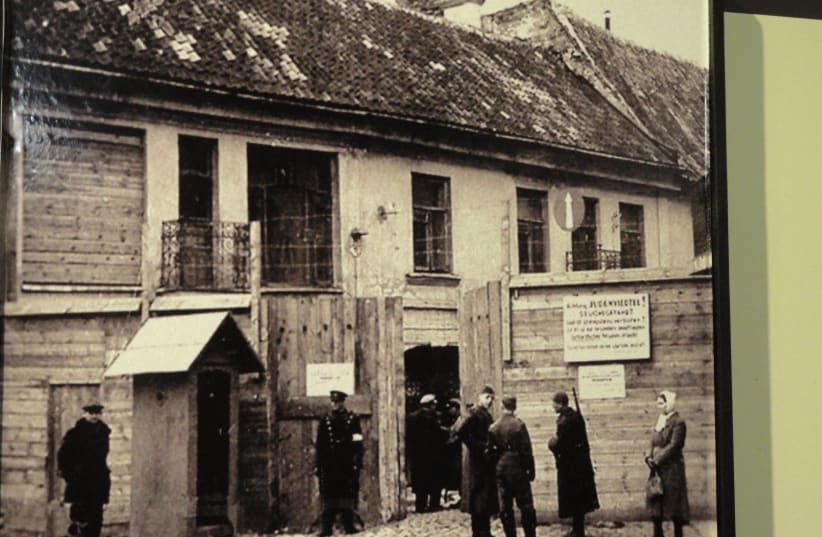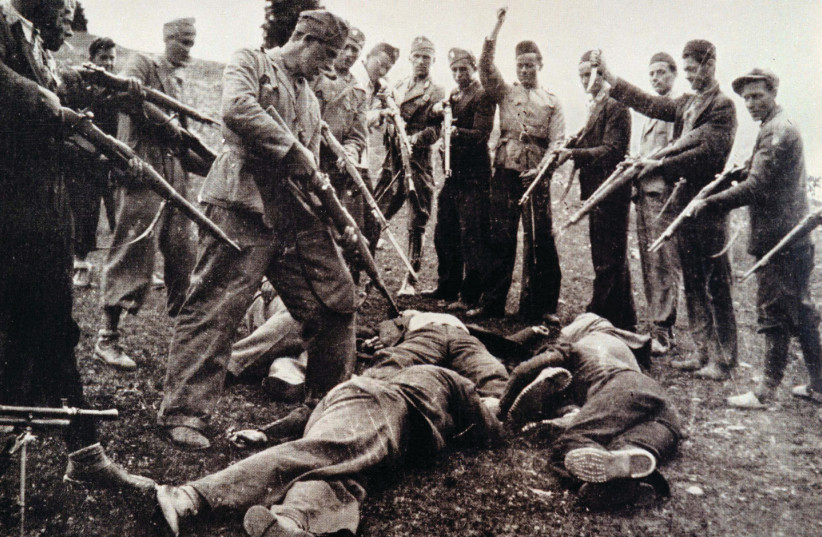When we think of the Second World War, we think of its battles and shifting front lines: far away, within and across the Atlantic and Pacific Oceans. While accurate, there is a small, interesting footnote that runs counter to that assumed understanding. On June 14, 1940, the Nazis marched into Paris, and France had signed an armistice with Hitler by the end of the month. A few weeks later, the French parliament ended the Third Republic and installed World War I hero Marshal Pétain as the chief of state, replacing the values of liberté, egalité, fraternité (liberty, equality, and fraternity) with travail, famille, patrie (work, family, and fatherland).
With that change of government, not only France but also French colonies around the world came under the rule of the Vichy government, including the islands of Saint Pierre and Miquelon, only 12 miles off the southwest coast of Newfoundland.
The two islands – 93 square miles with a total population of 6,500 – were some of the oldest French overseas possessions. From the early 16th century, ownership had gone back and forth between France and Britain, until 1815, when the Treaty of Paris established French sovereignty.
Most of the citizens of the two islands were opposed to the Vichy government, but the French Prefect Baron Gilbert de Bournat, the administrator of the islands, was as Time magazine reported, “faithful to Vichy and Pétain.” While there was concern about this new strategic asset of Vichy and the Nazis in North America, the response to this development was not uniform in Washington, Ottawa and London.
The United States was worried about the Vichy government’s plans to hire Western Union to build a powerful transmitter on Saint Pierre that would have allowed the Nazis to broadcast directly into North America. Since Western Union was an American company, then-President Franklin Roosevelt was able to squelch that initiative. However, at that time the US was a nonbelligerent, and it recognized the Vichy government and moved the US embassy from Paris to Vichy in central France. Britain did not recognize the Vichy government and had great anxiety over what would happen to the French fleet. Assurances by the Nazis and the French were not enough for Churchill, and so a few weeks after the fall of Paris, the British – for the first time since the Battle of Waterloo – attacked French forces (in this case, the French navy in various ports in Western and Northern Africa).
Canada, while a part of the British Commonwealth, joined the US in recognizing the Vichy government. As with Britain, she was concerned with the French fleet coming under the command of the Nazis and hoped that by maintaining diplomatic relations with the Vichy government, Canada could keep the Vichy government from entering the war on the side of the Axis and prevent the transfer of the French fleet to the Nazis. The Canadians were also concerned with the growing number of ships being sunk in the western Atlantic by the Nazis.
THEY WERE convinced that the Saint Pierre radio transmitter – now in the hands of the Vichy government – was sending coded messages to the Nazis about the location of convoys going to Britain. Churchill said that the radio station was being used to convey “Vichy lies and poison throughout the world.”
In December 1941, a week after Pearl Harbor, the US and the Vichy government reached an agreement that the French Caribbean fleet would remain neutral. This agreement worried the leader of the Free French Forces, Charles de Gaulle. He feared this might be used to make Saint Pierre and Miquelon neutral, and so he prepared for Free French Forces to take over the two islands.
The British were in favor of this direct action, while the United States and Canada preferred a more limited Canadian takeover of the radio transmitters. The US’ position was informed by the Monroe Doctrine, a pillar of US foreign policy written by former president James Monroe and then-Secretary of State John Quincy Adams in 1823, which stated that the US would not tolerate any European armed forces in the Western Hemisphere.
On Christmas Eve 1941, with echoes of George Washington and the Battle of Trenton on the night of Christmas Day 1776, de Gaulle sent three small ships and a submarine with a total of 360 sailors to invade the Saint Pierre harbor. In the 30-minute operation there was no resistance, and the two islands came under the command of de Gaulle and the Free French Forces. Soon after the invasion, a plebiscite was held on the two islands with the Free French receiving 98% support.
The Allied response was mixed. The initial US reaction, influenced by the Monroe Doctrine as well as the belief that US support of Vichy could mitigate Nazi influence on Vichy, was to ask de Gaulle to return the islands to the Vichy government.
There were many voices in the US that opposed that view. In January 1942, Carl Sandburg and Helen Keller, along with 50 other prominent Americans sent a telegram to Roosevelt opposing then-Secretary of State Cordell Hull’s position to return the islands to Vichy control. Churchill – while not completely happy with de Gaulle’s unilateral action – was more concerned with keeping de Gaulle and the Free French Forces happy. Former Canadian prime minister Mackenzie King told the US Secretary of State that “it would not do to have the Governor restored as he was pro-Axis, and his wife a German” and “Canadian feeling was relieved and pleased with the de Gaulle accomplishment.”
For the rest of the war, the Free French Forces remained in control of Saint Pierre and Miquelon. Though this is a small chapter of World War II, off the coast of North America (some might say a footnote) it nevertheless teaches about the complexities of interests and diplomatic relations between allies, even when united in fighting a force as diabolical as the Nazis. Today, those lessons and insights should not be lost on us as the world tackles and addresses so many vital issues.
The writer is rabbi emeritus of the Israel Congregtion, Manchester Center, Vermont, and a faculty member of the Arava Institute for Environmental Studies and Bennington College.

